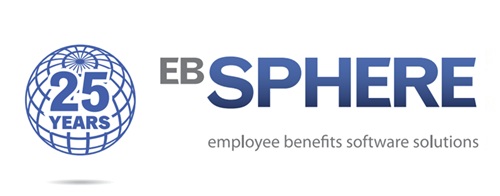Dynamic Dialogues
Previous Dialogue.

Dialogue Chair:
Nathalie Burrows, Editor
An independent trustee recently shared with me the governance review yearplan in place on a standalone fund he served on – there was no fewer than 18 fund policies to be reviewed annually (excluding provider and SLA reviews). Assuming 4 trustee meetings a year, that’s 4.5 policies per meeting! This governance burden has certainly lent impetus to rationalisation of the industry into umbrella funds. But is this in the best interest of the average retirement fund member? Sure, administration fees may be cheaper, but there may be expensive consequences – no employer involvement, other fees, conflicts of interest, limited investment managers/portfolios provided.
What are your views?
Umbrella Funds certainly have a place in the industry. If used correctly they can be a very cost-effective way of providing retirement solutions. However, in life cheaper is not always better. For defined contribution funds expense management is important. However, maximising net investment returns will have a far larger impact on your retirement benefit than minimising costs. Umbrella funds can often provide a narrow range of investment options to clients. This can lead to lower long term returns. The link between members and trustees should not be overlooked. Employer trustees and member trustees will understand members far better than independent trustees. It is very difficult to provide optimal solutions to members without fully understanding their financial and other needs. Employer and member trustees also have a vested interest to make sure that a Fund runs as efficiently as possible and provides optimal outcomes. Perhaps the relevant question is not how to manage the governance burden through umbrella funds, but rather how do we reduce the governance burden? Did an expense policy ever stop anyone from abusing fund expenses? Do you really need a communications policy to tell you that it is important to communicate to members? Should we be regulating more or educating and training more? Or do we need an education and training policy?
Umbrella Funds are certainly better from a member perspective as economies of scale allow for reduced costs which means more retirement savings. Umbrella Funds remove the need for an employer to have to appoint an administrator which again reduces the cost on the employer and potentially the need for extra resources to do this function. Governance in terms of trustees to be appointed, Umbrella Funds allow for professional independent trustees to be appointed which would not impact an employers day to day operations. Standalone funds would need to appoint and potentially remunerate trustees and if selected from within the employer would further strain the day to day work of such person. Umbrella Funds could offer more investment choice at a lower cost due to larger asset sizes. In an environment where regulator burden is increasing on retirement funds, employers can get rid of that by choosing an umbrella fund. the Umbrella fund takes on all liability and risk and the employer does not have worry about the regulatory and compliance burdens of having to run a retirement fund. Umbrella funds are ideal for cost-conscious employers who want an easy-to-manage retirement solution with professional oversight. Standalone funds are better suited for large employers who want customization and control but are willing to handle the higher costs and responsibilities. Employers continue to play a key role in terms of involvement through management committees or advisory bodies which allow access to the Boards of trustees of the Umbrella Fund. Conflicts of interests are managed through annual declarations and fit and proper assessments ensuring those are managed in line with guidance note 8 and other related legislation.

You’ve laid out a compelling case about the trade-offs in the retirement fund industry, particularly with umbrella funds. It’s clear there’s a tug-of-war between efficiency and personalisation. Consolidation into umbrella funds does seem like a natural response to rising governance costs—spreading the load across more members makes sense on paper, especially when you’re chasing economies of scale. But the cracks start showing when you dig into the downsides, and you’ve hit on some big ones.
The dilution of the employer-employee link is a real gut punch. Employers often see themselves as stewards of their workers’ futures, but in an umbrella setup, their voice gets drowned out. You end up with this generic, off-the-shelf solution that’s supposed to work for everyone but rarely does. It’s like buying a suit that’s “close enough” in size—sure, it fits, but it’s not exactly flattering. And the investment options shrinking? That’s a serious bottleneck. Locking members into a few pre-set portfolios might streamline things for the fund, but it can leave savers stuck with mediocre returns or strategies that don’t match their risk appetite. The cross-subsidisation angle you mentioned—where some portfolios prop up admin costs—is a sneaky way to mask who’s really paying for what.
The fee issue is a head-scratcher too. That example you gave, with the R20 admin fee drop offset by a 0.2% hike in asset management fees, shows how the math can get fuzzy. For a member with, say, R500,000 in savings, that 0.2% increase is R1,000 a year—way more than the R240 saved on admin. It’s not hard to see how “cost savings” can turn into a mirage for members, even if the employer feels like they’ve scored a win. And those conflicts of interest? When umbrella funds double as cash cows for investment providers, you’ve got to wonder who’s really being served. Those extra asset-based fees for “external” portfolios sound like a penalty for daring to step outside the fund’s preferred sandbox.
The studies you referenced—10-20% admin fee cuts—are a solid data point, but the murkiness around long-term returns tied to investment flexibility is telling. It’s tough to argue for a system when the upside (lower admin costs) is clear, but the downside (potentially weaker returns) is a roll of the dice. And oversight? That’s the clincher. Standalone funds might be a pain to manage, but at least the trustees are in the trenches, accountable to a group they know. With umbrella funds, you’ve got this faceless board making calls from afar—good luck getting them to sweat the details of every member pool.
It feels like the industry’s stuck in a classic dilemma: efficiency wants scale, but outcomes demand focus. Umbrella funds might be a slick fix for governance costs, but they risk leaving members with a retirement plan that’s more about the fund’s bottom line than their own. What do you think—any way to square that circle, or are we just picking the lesser evil here?

The question isn’t just about cost — it’s about value. Yes, umbrella funds reduce governance and admin overheads, but leading umbrella funds are showing that it’s possible to deliver personalisation at scale and are actively reshaping how technology can better serve members, without pushing up fees.
The future of umbrella funds is moving beyond “off-the-shelf”. By putting value over volume, clarity over complexity and outcomes before optics, more progressive funds are moving beyond efficiency for its own sake — and towards impact that truly matters for members. Think digital-first experiences, inclusive financial advice and counselling for all, personalised goal-based investments and choice, and benefits that meet real needs through life, not just at retirement. That’s the real evolution the industry should be driving toward.
When done right, umbrella funds can reconcile the traditional trade-offs between scale/efficiency and personalisation/member-centricity—delivering both, not one at the cost of the other.
























































































Is all the legislation purposefully meant to consolidate the industry and drive more and more employer funds into umbrella funds? The cost of compliance and time involved has simply become excessive. Do members simply become a number now?